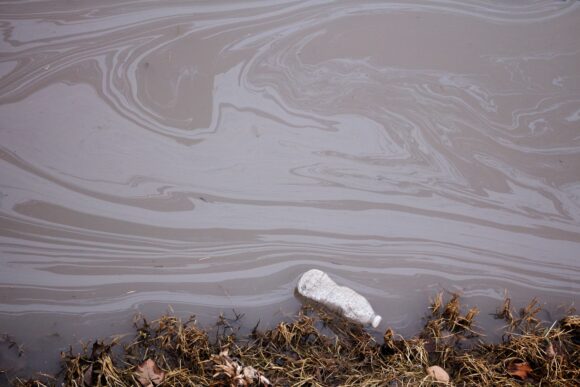The U.S. Environmental Protection Agency has finalized the first federal regulations on toxic “forever chemicals” in drinking water, setting tight limits that essentially require public water systems to all but eliminate their presence in American tap water.
The highly anticipated rules target six per- and polyfluoroalkyl substances, or PFAS, that are commonly used to make thousands of commercial and consumer products like semiconductors, firefighting foams and stain resistant fabrics.
PFAS are known as forever chemicals because they do not easily break down in the environment or in the human body, and they have been linked to cancers and other health concerns.
Here is what you need to know.
WHAT DOES THE RULE DO?
The EPA’s rule issued on Wednesday under the Safe Drinking Water Act sets strict limits ranging from 4 to 10 parts per trillion for five individual kinds of PFAS, and includes limits for several other PFAS if they are present in combination in water.
All public water systems have three years to complete their monitoring for these chemicals and must inform the public of the level of PFAS measured in their drinking water.
In cases where PFAS is found at levels that exceed the standards, the water systems are required to implement measures to reduce PFAS in their drinking water within five years.
HOW DOES THIS RULE FIT IN WITH OTHER PFAS REGULATIONS?
The rule is the most aggressive regulation yet under the EPA’s so-called “PFAS roadmap.”
The agency previously bolstered requirements that manufacturing facilities report their use and disposal of PFAS, and issued a rule preventing companies from using PFAS in new manufacturing processes without EPA approval, among other things.
Going forward, the agency is expected to finalize rules designating at least two PFAS as hazardous substances under the U.S. Superfund law, which could expose many industries to potential cleanup liability.
ARE LEGAL CHALLENGES TO THE RULE LIKELY?
Legal experts say court challenges seeking to block the rule are likely to be filed by manufacturers, business groups and potentially water systems themselves.
The challengers are likely to argue that the EPA’s rules were crafted without adequately considering the cost of compliance or without adequate evidence showing the need for the rules, in violation of requirements under the Safe Drinking Water Act and federal administrative law.
The National Association of Manufacturers, the American Chemistry Council and the U.S. Chamber of Commerce said in comments last year to a draft version of the rule that it overstated the benefits of imposing the limits while underestimating costs. Water utility industry groups said in comments that compliance could cost water systems billions of dollars.
Texas, which has frequently challenged Biden administration rules in court, has called elements of the rule “oversimplistic” and said it would be difficult for small water systems to comply given the costs.
HOW WILL THE RULE BE ENFORCED?
Under the Safe Drinking Water Act, most states are given primary enforcement authority to ensure drinking water standards are met. The EPA typically gets involved when states are not enforcing the requirements or are otherwise unsuccessful in enforcement efforts.
State and federal regulators can issue administrative orders that lay out steps for water systems to come into compliance, file legal actions or fine water systems that are not meeting the standards. Experts say any future fines are likely years away, and would come after numerous warnings.
Citizens can also sue the government or water systems under the law to force compliance.
COULD THE STANDARDS BOLSTER EXISTING LAWSUITS?
Lawsuits brought by hundreds of water systems against chemical manufacturers accusing them of negligence and of creating a nuisance by contaminating water with PFAS have already yielded major settlements.
Last year, 3M reached a settlement worth $10.3 billion with water systems across the U.S. that will help pay to clean up drinking water contaminated with PFAS, while DuPont de Nemours Inc, Chemours and Corteva reached a similar deal worth $1.19 billion.
The settlements were a part of sprawling multidistrict litigation (MDL) in South Carolina federal court, where other pending lawsuits against manufacturers may ultimately yield more money for the water systems.
The new rule could make it easier for water systems that are suing or considering suing companies that produce or use PFAS near them for polluting waterways with the chemicals. Legal experts say that is because the rules create an unambiguous standard for what levels of PFAS in drinking water are acceptable, and so could make it easier for water systems to prove they have been harmed by the pollution.
Topics Lawsuits
Was this article valuable?
Here are more articles you may enjoy.



 Lawsuit Accuses Major Food Companies of Marketing ‘Addictive’ Food to Kids
Lawsuit Accuses Major Food Companies of Marketing ‘Addictive’ Food to Kids  Don’t Touch Fla. Reforms, Panelists Implore, but Maybe Tax Breaks for Elevated Homes
Don’t Touch Fla. Reforms, Panelists Implore, but Maybe Tax Breaks for Elevated Homes  Ransomware Gangs’ Merciless Attacks Bleed Small Companies Dry
Ransomware Gangs’ Merciless Attacks Bleed Small Companies Dry  Florida Citizens Policy Count Dips Below 1 Million for First Time in Two Years
Florida Citizens Policy Count Dips Below 1 Million for First Time in Two Years 

